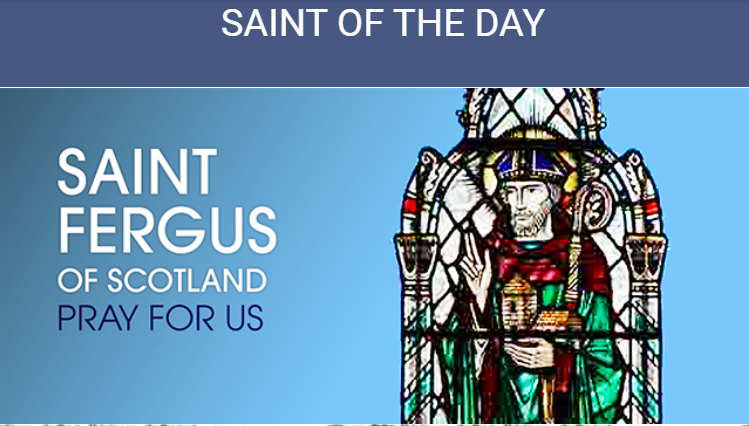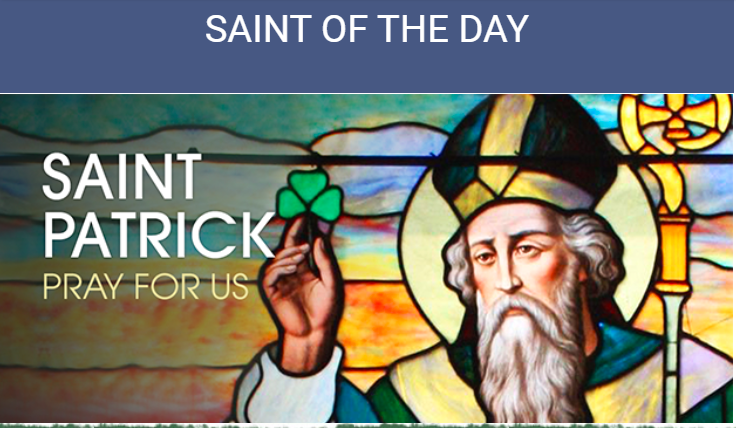https://www.youtube.com/@TheBlessedOne-jq3cy
Saint of the Day – November 30 – Saint Andrew, Apostle
Saint Andrew: Born: 5; Died: 60/70
Patronage: Scotland, Barbados, Georgia, Ukraine, Russia, Greece, Cyprus, Romania, Patras, Burgundy, San Andrés (Tenerife), Diocese of Parañaque, Candaba, Pampanga, Masinloc, Telhado, Sarzana, Pienza, Amalfi, Malta, Manila and Prussia; Diocese of Victoria; fishermen, fishmongers and rope-makers, textile workers, singers, miners, maidens, old maids butchers, farm workers, protection against sore throats, protection against convulsions, protection against fever, protection against whooping cough, Russian Navy, unmarried women; women who wish to become mothers
Saint of the Day – November 30 – Saint Andrew
Saint Andrew’s Story (D. 60?)
Andrew was Saint Peter’s brother, and was called with him. “As [Jesus] was walking by the sea of Galilee, he saw two brothers, Simon who is now called Peter, and his brother Andrew, casting a net into the sea; they were fishermen. He said to them, ‘Come after me, and I will make you fishers of men.’ At once they left their nets and followed him” (Matthew 4:18-20).
John the Evangelist presents Andrew as a disciple of John the Baptist. When Jesus walked by one day, John said, “Behold, the Lamb of God.” Andrew and another disciple followed Jesus. “Jesus turned and saw them following him and said to them, ‘What are you looking for?’ They said to him, ‘Rabbi (which translated means Teacher), where are you staying?’ He said to them, ‘Come, and you will see.’ So they went and saw where he was staying, and they stayed with him that day” (John 1:38-39a).
Little else is said about Andrew in the Gospels. Before the multiplication of the loaves, it was Andrew who spoke up about the boy who had the barley loaves and fishes. When the Gentiles went to see Jesus, they came to Philip, but Philip then had recourse to Andrew.
Legend has it that Andrew preached the Good News in what is now modern Greece and Turkey and was crucified at Patras on an X-shaped cross.
Reflection
As in the case of all the apostles except Peter and John, the Gospels give us little about the holiness of Andrew. He was an apostle. That is enough. He was called personally by Jesus to proclaim the Good News, to heal with Jesus’ power and to share his life and death. Holiness today is no different. It is a gift that includes a call to be concerned about the Kingdom, an outgoing attitude that wants nothing more than to share the riches of Christ with all people.
Saint Andrew is the Patron Saint of:
Fishermen
Greece
Russia
Scotland
//Franciscan Media//
Saint of the Day – May 23 – Saint William of Rochester

St. William of Rochester (d. 1201), also known as St. William of Perth, was born in Perth, Scotland. He was a wild youth who matured into a devoted man of God. He became a baker, and out of his charity he would always set aside bread to feed the poor. One day, while walking into the church for Mass, he found an abandoned baby boy on the church steps. He adopted the child, raised him, and taught him his trade. Years later St. William made a vow to visit the sacred sites of Our Lord’s life on a pilgrimage to the Holy Land, along with his adopted son. The two set out on their journey. While traveling through England his son deceived him, slit his throat, and stole the money he had saved for their pilgrimage. William’s abandoned body was discovered and mourned over by a mentally deranged woman. She made a crown of flowers and placed it on the head of William’s murdered corpse, then afterwards put the garland on her own head. Upon doing this, she was immediately cured of her mental illness. The local monks learned of this miracle and carried William’s body to the Rochester cathedral to give him the proper burial of a saint. His shrine later attracted many pilgrims. St. William of Rochester is the patron of adopted children. His feast day is May 23rd.
//The Catholic Company//
Saint of the Day – March 30 – Saint Fergus of Scotland

St. Fergus of Scotland (d. 730 A.D.), also known as St. Fergustian or Fergus the Pict, Bishop of the Gaels, was a bishop serving in the north of Scotland. Little is known of his life. He is believed to have been trained as a bishop in Ireland, ministering there for many years before traveling as a missionary to Scotland. He went throughout the Scottish countryside preaching the Gospel, setting up churches dedicated to St. Patrick of Ireland, and working to convert the pagan people to Christianity. He also traveled to St. Peter’s Basilica to participate in the Council of Rome in 721 A.D. He died around the year 730 A.D. and is buried in Glamis, Angus, in Scotland. Nearby is St. Fergus’ Well. The site is believed to be where St. Fergus presided over religious services before the first church of Glamis was built. His feast day is March 30th.
//The Catholic Company//
Saint of the Day – March 20th

St. Cuthbert of Lindisfarne (634-687 A.D.) was born in present-day Scotland to a lowly family, and worked as a shepherd near the Melrose Abbey monastery. A child playmate prophesied that he would one day become a bishop. And one day, while tending to his sheep, St. Cuthbert saw in a vision the soul of St. Aidan, the Bishop of Lindisfarne, carried to heaven by angels. This mystical experience inspired in him a desire to become a monk.
After spending time as a soldier defending his home region of Northumbria against attack, he arrived on horseback, armed with a spear, seeking entrance at the monastery. He was received and became a monk in the Celtic Christian tradition. He grew in holiness and learning, and after serving as prior he withdrew from the community into the lifestyle of a solitary hermit.
After several years of a quiet life of prayer and penance, he was persuaded to return to active life as the Bishop of Lindisfarne. A year later he became sick and died. Miracles were reported at his grave; in fact, so numerous were the reported miracles that Cuthbert was called the “Wonder-worker of England.” Throughout the Middle Ages the shrine of Cuthbert remained one of the most popular places of pilgrimage in northern England. His feast day is March 20th.
//The Catholic Company//
Saint of the Day – March 17th

Saint Patrick (C. 415? – 493?)
Legends about Patrick abound; but truth is best served by our seeing two solid qualities in him: He was humble and he was courageous. The determination to accept suffering and success with equal indifference guided the life of God’s instrument for winning most of Ireland for Christ.
Details of his life are uncertain. Current research places his dates of birth and death a little later than earlier accounts. Patrick may have been born in Dunbarton, Scotland, Cumberland, England, or in northern Wales. He called himself both a Roman and a Briton. At 16, he and a large number of his father’s slaves and vassals were captured by Irish raiders and sold as slaves in Ireland. Forced to work as a shepherd, he suffered greatly from hunger and cold.
After six years Patrick escaped, probably to France, and later returned to Britain at the age of 22. His captivity had meant spiritual conversion. He may have studied at Lerins, off the French coast; he spent years at Auxerre, France, and was consecrated bishop at the age of 43. His great desire was to proclaim the good news to the Irish.
In a dream vision it seemed “all the children of Ireland from their mothers’ wombs were stretching out their hands” to him. He understood the vision to be a call to do mission work in pagan Ireland. Despite opposition from those who felt his education had been defective, he was sent to carry out the task. He went to the west and north–where the faith had never been preached–obtained the protection of local kings, and made numerous converts.
Because of the island’s pagan background, Patrick was emphatic in encouraging widows to remain chaste and young women to consecrate their virginity to Christ. He ordained many priests, divided the country into dioceses, held Church councils, founded several monasteries and continually urged his people to greater holiness in Christ.
He suffered much opposition from pagan druids and was criticized in both England and Ireland for the way he conducted his mission. In a relatively short time, the island had experienced deeply the Christian spirit, and was prepared to send out missionaries whose efforts were greatly responsible for Christianizing Europe.
Patrick was a man of action, with little inclination toward learning. He had a rock-like belief in his vocation, in the cause he had espoused. One of the few certainly authentic writings is his Confessio, above all an act of homage to God for having called Patrick, unworthy sinner, to the apostolate.
There is hope rather than irony in the fact that his burial place is said to be in County Down in Northern Ireland, long the scene of strife and violence.
Reflection
What distinguishes Patrick is the durability of his efforts. When one considers the state of Ireland when he began his mission work, the vast extent of his labors, and how the seeds he planted continued to grow and flourish, one can only admire the kind of man Patrick must have been. The holiness of a person is known only by the fruits of his or her work.
Saint Patrick is the Patron Saint of:
Engineers
Ireland
Nigeria
//Franciscan Media//
